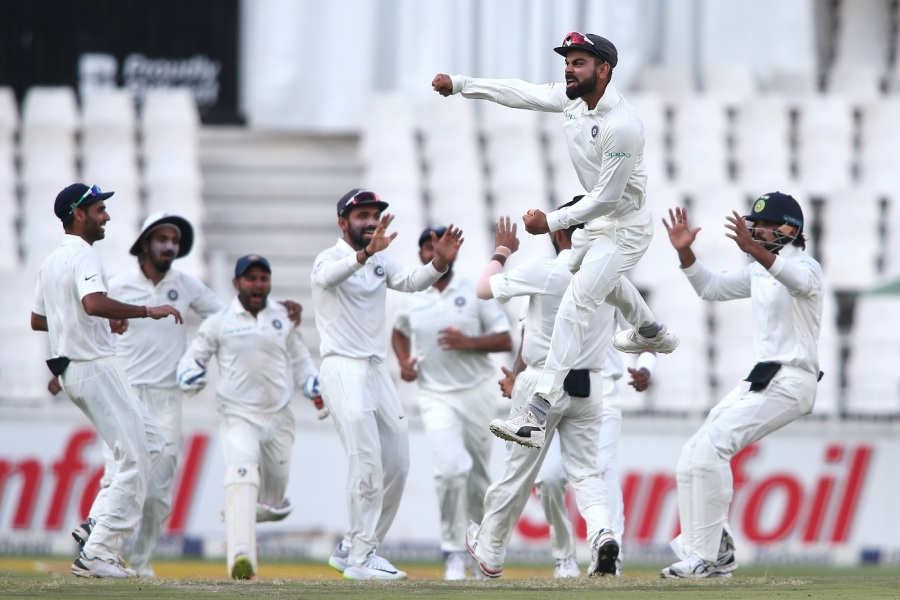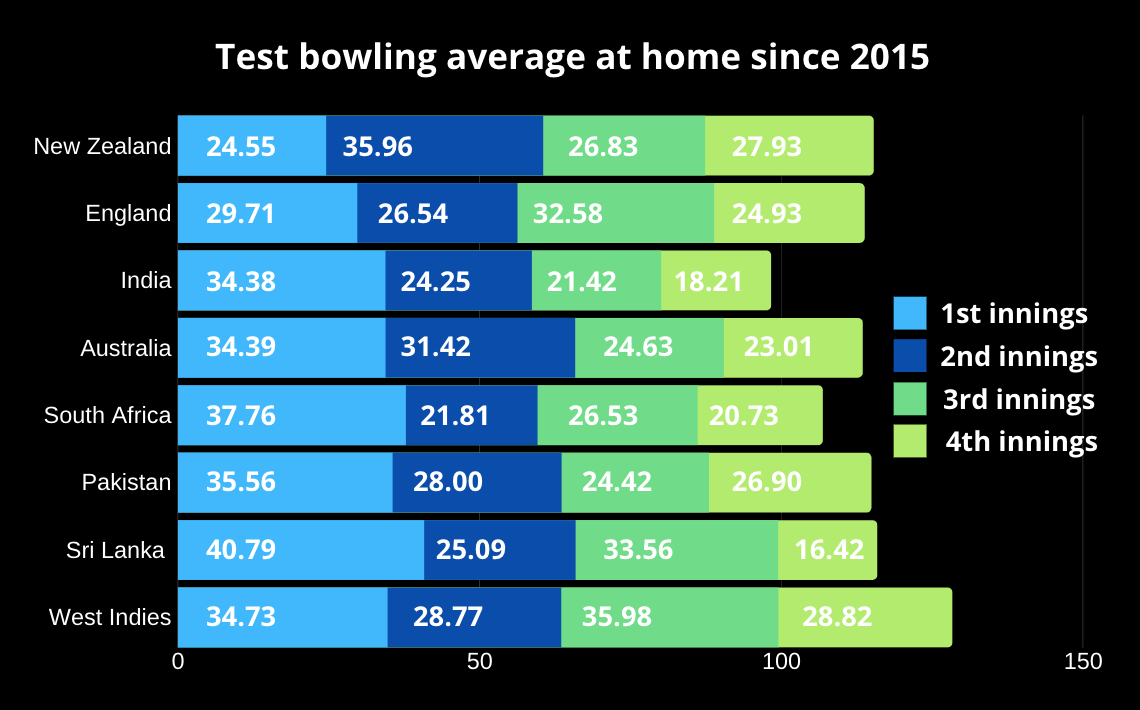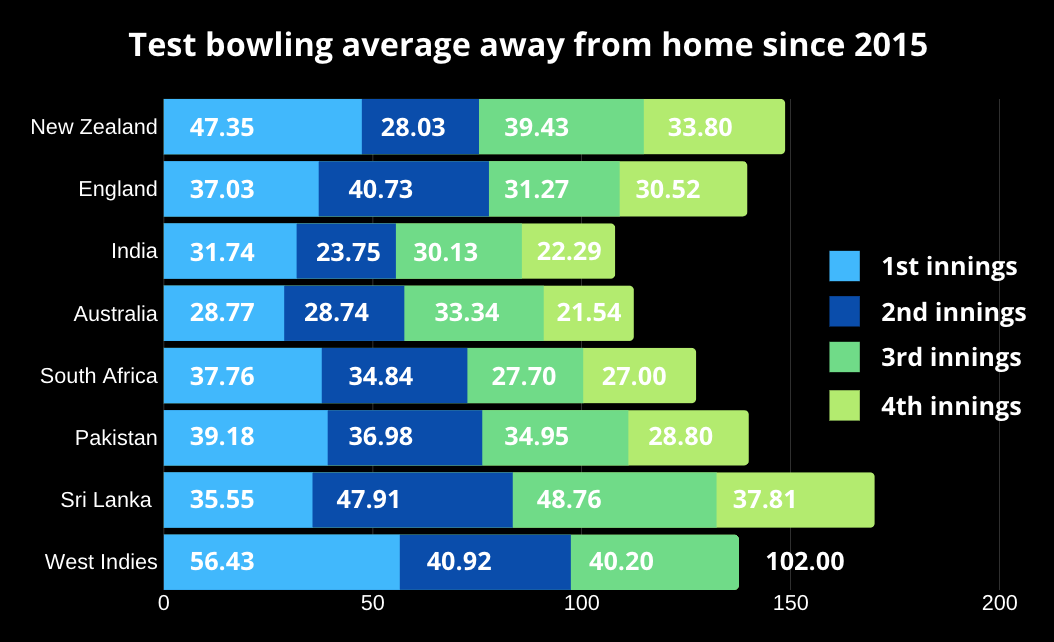
April 12, 2020
Almost every statistic proves it. Almost every perfect out swinger validates it. Almost every bamboozled face of a batsman confirms it. For the last few years, India’s bowlers have won plaudits from every fan, commentator and opposition batsmen alike. It would now be no shock to claim India have the best bowling attack in test cricket. In fact, it may be a shock if you claimed another team had the best bowling group.
India’s stock of fast bowlers, spearheaded by the remarkable Ishant Sharma, have gone all over the world and shown their immense quality while the spinners have impressed equally. There may be some people from Australia who would say their bowling attack is the best in the world, but the statistics prove that in most conditions, India have the upper hand. However, these two countries are not the only teams with a stellar bowling attack.
The current generation is headlined by a few iconic batsmen in test cricket, but there are several standout bowlers. The likes of Nathan Lyon and Ravichandran Ashwin dominate the spin bowling department, while James Anderson and Trent Boult are just two of the fast bowlers who have thrilled in the last few years. But which bowling attacks perform best in particular scenarios? Can their bowling performances tell us anything about how teams go about winning test matches? I had a look at the data to see if these questions can be answered.
For the purpose of this analysis, I looked at data of all test matches from 1 January 2015 not including Afghanistan, Bangladesh, Ireland and Zimbabwe. The reason for the time period is because it gives a big enough sample space to make claims about how bowling attacks have performed. The reason those teams have not been included in this analysis is because they have not played a comparable number of test matches to the other countries and it would be unfair to make claims on a similar level to other teams.
When analysing bowling attacks, it helps to look at innings-wise data as well as teams’ records in both home and away conditions. The common perception would be that all teams will do well in their own backyard because of their experience and knowledge of the pitches. And at an overall level, that perception holds true because West Indies are the only team to average more than 30 with the ball at home in the last five years. India and South Africa stand out in particular, with bowling averages of 24.45 and 25.87 respectively.
The more revealing insights come when we look at innings-wise data. New Zealand and England have pitches and conditions that are among the most conducive in the world for fast bowlers. That is why in the first innings of test matches, the Kiwis and the English do so well when they bowl as their averages of 24.55 and 29.71 show. England continue to be brilliant when they bowl in the second innings, but New Zealand get significantly worse in the second innings at home with a bowling average of 35.96. That is the highest among the eight nations in this period. That shows England is possibly the most difficult place to bat for visiting batsmen, not just for the conditions but also because of England’s bowlers throughout the match.
In other countries, batting conditions are often better at the beginning of games. So for India and Australia to average above 34 with the ball in the first innings at home is not all that surprising. What is surprising is that South Africa’s potent bowling attack have the second highest average of the eight nations in the first innings at home. They average 37.76 runs per wicket they take in that innings. But when they bat first at home, they are absolutely breathtaking with the ball in the second innings. They average just 21.81 with the ball when bowling second in test cricket at home. All other countries, except New Zealand as mentioned earlier, do better with the ball at home when they let their batsmen take the crease in the first innings.
Later on in matches at home is where India get lethal with their bowling. They average 21.42 in the third innings and 18.21 in the final innings in test matches at home since 2015. Pakistan and Sri Lanka are also two standout nations in the third and fourth innings of test matches at home, Sri Lanka particularly in the last innings. This confirms the perception that in the subcontinent, batting becomes more difficult because of the wear and tear pitches see. Every country averages less than 30 with the ball in the final innings of test matches at home. New Zealand and England love bowling first at home, India, Pakistan and Australia are particularly ruthless in finishing off the opposition at home.

When looking at matches away from home, there are more interesting insights that come to light. Only one country averages below 30 with ball when bowling first away from home, and that team is Australia. Number one ranked India average an impressive 31.74 with the ball in the first innings away from home since 2015. But on the occasions when they have bowled first away from home in that time, they have not won a single one of those test matches. They are the only side of those in this analysis not to have a win away from home when bowling first.
There is a significant improvement amongst some teams when they bowl second in overseas test matches. India, New Zealand, Australia, South Africa and Pakistan all improve on their first innings records. This may be to do with the fact they see how the opposition bowled on the surface, learn from the things they did well or did not, and then adapt accordingly. But England and Sri Lanka do worse with the ball in the second innings compared to the first. They average 40.73 and 47.91 respectively and this could come down to the fact that neither of these sides had extremely fast bowlers to hurt the opposition on docile pitches.
Once again, teams struggle in the third innings away from home with the ball, with only South Africa averaging lower than 30 at 27.7. Pakistan have the best record when having to bowl in the third innings in overseas conditions with five victories in 12 test matches. But they average 34.95 in that innings which is not spectacular. This relatively poor record across the board is probably down to the aggressive batting of home teams as they search for a declaration or the chance to set visitors a huge target. New Zealand, West Indies and Sri Lanka all average above 39 in the third innings away from home with the ball since the start of 2015.
There have actually not been too many occasions when away teams have bowled in the fourth innings of test matches, just 54 matches in the last five years to be precise. South Africa, New Zealand, Sri Lanka and West Indies have all done it in just three matches each so their records need to be taken with a pinch of salt before making claims about their bowling attack. But across the board, except the West Indies, these countries seem to enjoy bowling in the fourth innings away from home and have tremendous success. Australia and India lead the way with stellar averages of 21.54 and 22.29 respectively. This is in line with the supposed motto of this generation of test cricketers away from home; if you win the toss, make sure to bat first or pray the opposition choose to bowl. Otherwise it is very difficult to win batting last.

It is all well and good measuring how teams are doing in terms of their bowling average but what types of batsmen are teams best at getting out? As expected, all these eight teams excel against tailenders. England average the highest against batsmen in positions eight to 11, but even they have a magnificent average of 17.78. Against the top three is where India have been truly exceptional since 2015. They average just 26.89 in 51 test matches. Their bowling average against the middle order is an equally impressive 29.21, so they have statistically been the standout team for the bowling in test cricket. New Zealand, Pakistan and Sri Lanka do better against the middle order than the top order whereas other teams do the opposite.
So while the statistics clearly suggest India have been the best bowling team for the last five years, followed closely by South Africa and Australia, there seems to be a key pattern that has come to light. Batting first seems to help teams’ bowlers, not only if the teams bat well but also because it gives them the chance to see what lengths and what speeds to bowl on a particular pitch. That adds to the reason why captains so often like to bat first, not just to save their batsmen but help their bowlers.